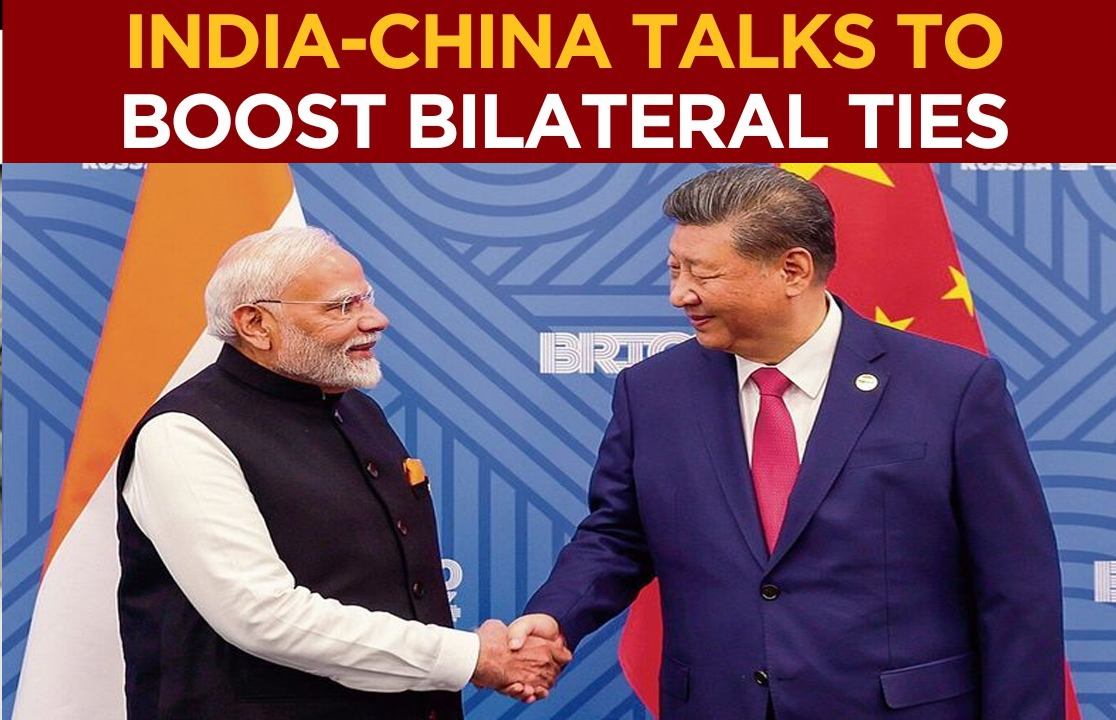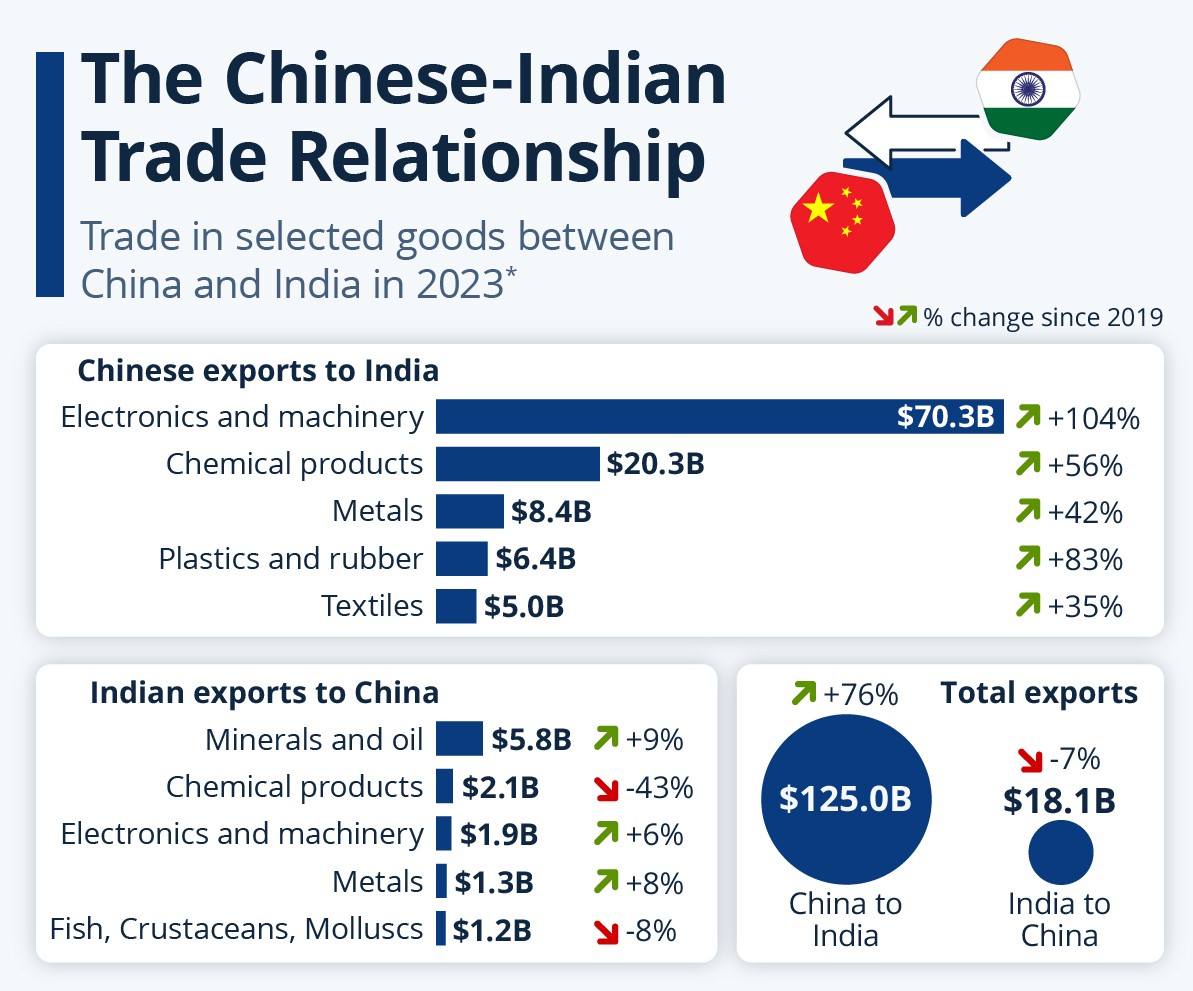Context:
In a noteworthy shift after years of tension, India and China have taken concrete steps toward revitalizing their strained bilateral relationship. Following the 2020 Galwan Valley clash that triggered a diplomatic freeze, both sides have now agreed to resume direct flights, reopen border trade, and establish a working group on border management. These decisions followed high-level talks between Chinese Foreign Minister Wang Yi and Indian leaders, including Prime Minister Narendra Modi and National Security Advisor Ajit Doval.
Key Agreements between two countries:
1. Resumption of Direct Flights
India and China have agreed to resume direct flights between their countries by finalizing an updated Air Services Agreement.
2. Reopening of Border Trade
Border trade will resume through three key passes:
-
- Lipulekh Pass (Uttarakhand)
- Shipki La Pass (Himachal Pradesh)
- Nathu La Pass (Sikkim)
- Lipulekh Pass (Uttarakhand)
3. Working Group on Border Management
Under the Working Mechanism for Consultation and Coordination on India-China Border Affairs (WMCC), a new working group will be set up to:
-
- Enhance communication on border issues.
- Maintain peace and stability along the Line of Actual Control (LAC).
- Prevent unintended military confrontations.
- Enhance communication on border issues.
Motivations behind new agreements:
1. China’s Motivations
China’s outreach may stem from:
· Domestic economic pressures post-COVID.
· A desire to avoid simultaneous tensions with the West and India.
· Strategic efforts to reduce India’s engagement with the Quad (India, USA, Japan, Australia) and tilt the balance in Asia.
However, Beijing’s record of aggressive posturing and unilateral moves—such as its activities in the South China Sea and military infrastructure build-up along the LAC—warrants caution.
2. India’s motivation:
India motivations include:
· De-escalating border tensions to focus on domestic economic growth.
· Diversifying trade ties while reducing overreliance on any single country.
· Balancing cooperation with vigilance through continued investments in border infrastructure and partnerships with democratic allies.
Implications of the new agreements:
The current thaw could create meaningful progress in several areas if both sides commit to implementation in good faith.
Economic Cooperation:
· Resumed trade and logistics can boost exports, investments, and supply chains.
· Cross-border commerce could revitalize regional economies, especially in underdeveloped Himalayan regions.
People-to-People Exchanges:
· Direct flights and easier visas can strengthen cultural and academic ties, restoring channels of mutual understanding.
· Greater engagement at the civil society level can contribute to long-term peacebuilding.
Border Stability:
· The working group can reduce the frequency and severity of border incidents.
· Regular dialogue may prevent the kind of escalations seen in 2020 and 2022.
Risks and Challenges:
Despite the apparent progress, significant risks remain:
Security Vulnerabilities
· Reopening trade and travel routes could increase the risk of:
o Espionage
o Smuggling
o Surveillance of critical infrastructure
China’s Track Record of Strategic Opportunism:
· India must remain wary of agreements that look good on paper but are undermined by unilateral Chinese actions, such as new border outposts or maps claiming Indian territory.
Regional Influence and Competition:
· China continues to expand influence in South Asia through its Belt and Road Initiative, investments in Pakistan, Sri Lanka, Nepal, and the Maldives.
· India must ensure that bilateral cooperation does not dilute its regional leadership role or strategic leverage.
Key Strategic Issues that might hamper the agreement in future:
These agreements reflect mutual recognition that continued hostility is counterproductive. However, deeper strategic realities must be considered.
Unresolved Border Disputes:
Despite the formation of a border management group, the fundamental issue—the LAC—remains disputed. Previous efforts at de-escalation have been temporary. The risk of future standoffs still looms, especially in contested areas such as:
· Eastern Ladakh (India)
· Aksai Chin (China-controlled)
· Arunachal Pradesh (India-controlled, claimed by China)
Economic Interdependence vs. Strategic Autonomy
Increased trade and connectivity offer economic rewards but could:
· Increase India's economic dependence on China in key sectors such as electronics, machinery, and APIs (Active Pharmaceutical Ingredients).
· Limit India's room for maneuver in geopolitical negotiations, especially where interests diverge.
India must ensure that economic cooperation does not compromise its national security or strategic autonomy.
Broader Significance of new ties between two countries:
Impact on the Indo-Pacific
· Improved India-China ties could reduce regional instability and complement existing frameworks like the SCO and BRICS.
· However, any thaw must not lead to a downplaying of India’s Indo-Pacific partnerships, especially with democratic allies.
Global Geopolitics
· With the West and China at odds, India remains a swing player in global diplomacy.
· A more constructive relationship with China could enhance India’s bargaining power on the global stage—but only if managed with caution.
Conclusion:
The latest developments in India-China relations offer a window of opportunity—but also demand strategic discipline. The resumption of flights, reopening of trade, and creation of a border management group are important confidence-building measures, yet they are not substitutes for resolving core disputes.
For this "new chapter" to truly materialize:
· China must respect India’s sovereignty and reduce unilateral provocations.
· India must engage pragmatically, with clarity about its red lines and interests.
· Both countries must invest in long-term trust-building, moving from crisis management to genuine cooperation.








